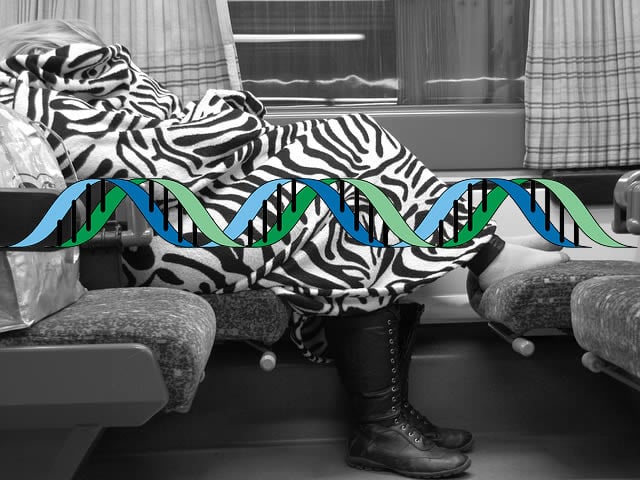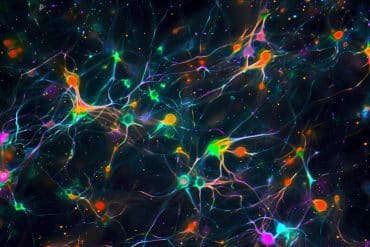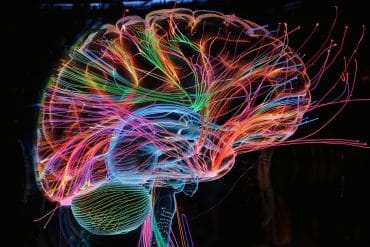Researchers discover that a protein called Taranis could hold the key to a good night’s sleep.
Most of us need seven to eight hours of sleep a night to function well, but some people seem to need a lot less sleep. The difference is largely due to genetic variability. In research published online June 18th in Current Biology, researchers report that two genes, originally known for their regulation of cell division, are required for normal slumber in fly models of sleep: taranis and Cyclin-dependent kinase 1 (Cdk1).
‘There’s a lot we don’t understand about sleep, especially when it comes to the protein machinery that initiates the process on the cellular level,’ says Kyunghee Koh, Ph.D., assistant professor of Neuroscience at the Farber Institute for Neurosciences at Thomas Jefferson University and senior author on the study. ‘Our research elucidates a new molecular pathway and a novel brain area that play a role in controlling how long we sleep.’

The researchers examined thousands of mutant fly lines and found a mutant, called taranis, that slept a lot less than normal flies. Using a series of genetic and biochemical experiments, the researchers tracked how Taranis interacted with other proteins and saw that Taranis bound to a known sleep regulator protein called Cyclin A. Their data suggest that Taranis and Cyclin A create a molecular machine that inactivates Cdk1, whose normal function is to suppress sleep and promote wakefulness.
Previous research has shown that Cyclin A is expressed in a small number of neurons including a cluster of seven neurons on each side of the brain. Koh and colleagues showed that these neurons are located in an area of the fly brain that corresponds with the human hypothalamus — one of the sleep centers of the human brain. They saw a reduction of overall sleep when Taranis was knocked down only in these 14 neurons and when these same neurons are activated. ‘We think this may be an arousal center in the fly brain that Taranis helps inhibit during sleep,’ says Koh.
Although the Taranis protein has a human cousin, called the Trip-Br family of transcriptional regulators, it is yet unclear whether a similar system is at play in humans. However, Dr. Koh and her team first plan to investigate the cues that turn Taranis on and which proteins the Cdk1 kinase acts on to prevent sleep.
Funding: This work was supported by NIH grant R01GM088221 and predoctoral fellowships from the Portuguese Foundation for Science and Technology.
Source: Edyta Zielinska – Jefferson University
Image Credit: Image is in the public domain
Original Research: Abstract for “TARANIS Functions with Cyclin A and Cdk1 in a Novel Arousal Center to Control Sleep in Drosophila” by Dinis J.S. Afonso, Die Liu, Daniel R. Machado, Huihui Pan, James E.C. Jepson, Dragana Rogulja, and Kyunghee Koh in Current Biology. Published online June 18 2015 doi:10.1016/j.cub.2015.05.037
Abstract
TARANIS Functions with Cyclin A and Cdk1 in a Novel Arousal Center to Control Sleep in Drosophila
Highlights
•tara is a novel sleep-regulatory gene in Drosophila
•TARA regulates CycA levels and interacts with CycA to control sleep
•TARA promotes sleep in CycA-expressing PL neurons, a novel arousal center
•Cdk1 interacts with tara and CycA and acts in PL neurons to suppress sleep
Summary
Sleep is an essential and conserved behavior whose regulation at the molecular and anatomical level remains to be elucidated. Here, we identify TARANIS (TARA), a Drosophila homolog of the Trip-Br (SERTAD) family of transcriptional coregulators, as a molecule that is required for normal sleep patterns. Through a forward-genetic screen, we isolated tara as a novel sleep gene associated with a marked reduction in sleep amount. Targeted knockdown of tara suggests that it functions in cholinergic neurons to promote sleep. tara encodes a conserved cell-cycle protein that contains a Cyclin A (CycA)-binding homology domain. TARA regulates CycA protein levels and genetically and physically interacts with CycA to promote sleep. Furthermore, decreased levels of Cyclin-dependent kinase 1 (Cdk1), a kinase partner of CycA, rescue the short-sleeping phenotype of tara and CycA mutants, while increased Cdk1 activity mimics the tara and CycA phenotypes, suggesting that Cdk1 mediates the role of TARA and CycA in sleep regulation. Finally, we describe a novel wake-promoting role for a cluster of ∼14 CycA-expressing neurons in the pars lateralis (PL), previously proposed to be analogous to the mammalian hypothalamus. We propose that TARANIS controls sleep amount by regulating CycA protein levels and inhibiting Cdk1 activity in a novel arousal center.
“TARANIS Functions with Cyclin A and Cdk1 in a Novel Arousal Center to Control Sleep in Drosophila” by Dinis J.S. Afonso, Die Liu, Daniel R. Machado, Huihui Pan, James E.C. Jepson, Dragana Rogulja, and Kyunghee Koh in Current Biology. Published online June 18 2015 doi:10.1016/j.cub.2015.05.037






